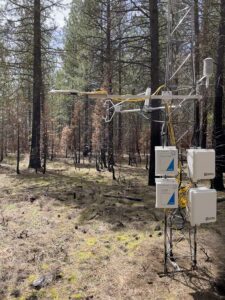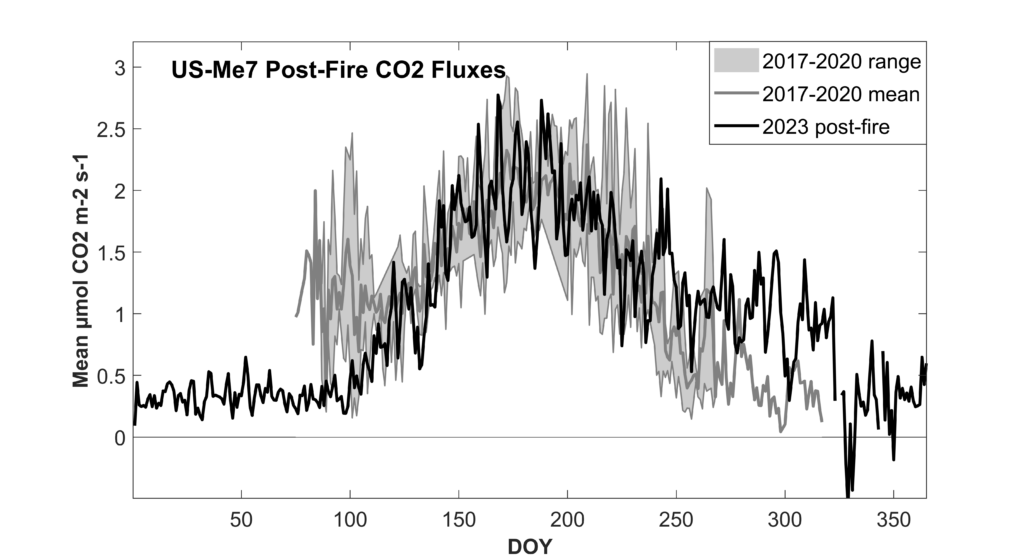Mixed Severity Fire Impacts

The Science
Wildfire has a wide range of impacts on forest landscapes. In August 2020, US-Me2 experienced a mixed-severity fire that burned through the footprint. The fire was strongly wind-driven, with areas where it reached the canopy causing strips of high-intensity active crown fire and adjacent strips where fire passed quickly through as a low-intensity ground fire (Bryant et al., 2022). The following spring, the landowner salvage-logged the high-severity sections, followed by replanting a year later. This mosaic of disturbance created many opportunities to study recovery, described in part in a previous blog post: https://ameriflux.lbl.gov/note-from-the-flux-site-can-a-forest-withstand-drought-and-wildfire-it-depends/.
The AmeriFlux Rapid Response Flux System (RRS) was deployed in a low-severity patch of intact forest adjacent to the salvage area that was too small for above-canopy measurements but suitable for subcanopy flux measurements. RRS subcanopy fluxes are being analyzed in the context of previous subcanopy flux measurements taken before the fire. This subcanopy flux site captures soil processes with minor contributions from sparse and still-recovering understory vegetation. Younger, small-diameter trees experienced high mortality post-fire from stem damage, and older trees have uniform but mild trunk charring.
The Impact
The RRS flux system measured the post-wildfire trajectory of carbon fluxes within the low burn severity disturbance area within the historic footprint of US-Me2. The low burn severity subcanopy stand fluxes recovered 2 years after fire, consistent with autotrophic respiration estimates from the 4 years prior to the fire.

Summary
Annual daily subcanopy fluxes in the low-severity stand closely track the annual pattern subcanopy fluxes for the 4 years prior to the fire. The early spring deviation is attributed to late snowmelt in 2023. The data indicate that the stand has recovered despite the mortality of younger age classes and loss of subcanopy vegetation. In contrast, the fluxes from the salvage-regen footprint of US-Me2 that experienced the highest severity fire follow an annual pattern consistent with dominantly heterotrophic respiration.
Contact
Chad Hanson, Oregon State University, Department of Forest Ecosystems and Society, Corvallis, OR, chad.hanson<at>oregonstate<dot>edu
Publications
Bryant, Kelsey N., et al. “Boosts in leaf-level photosynthetic capacity aid Pinus ponderosa recovery from wildfire.” Environmental Research Letters 17.11 (2022): 114034.

No Comments
Be the first to start a conversation